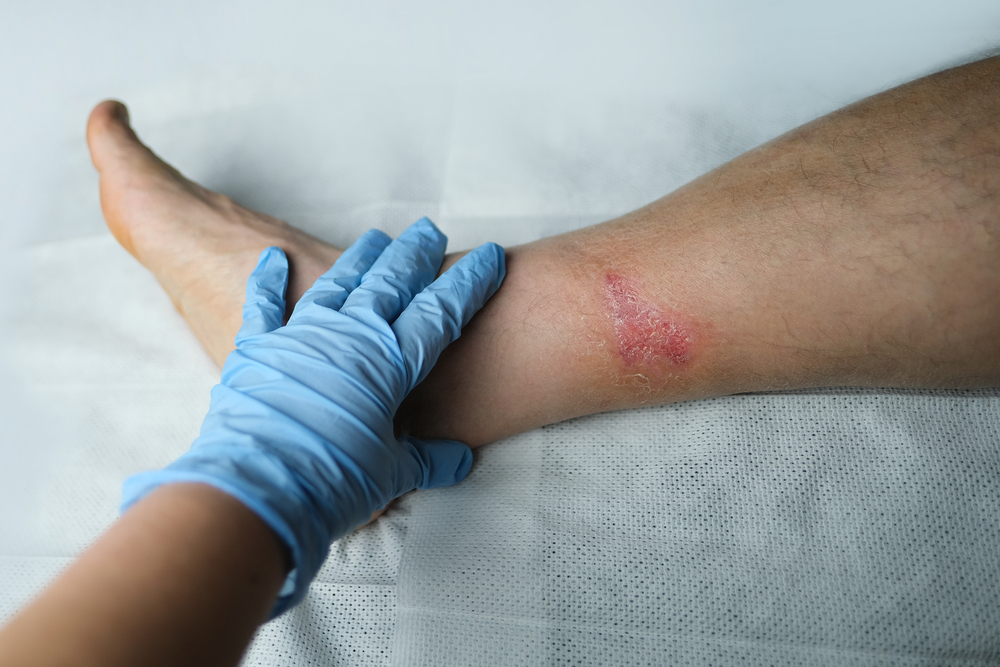
How to tell if a wound is healing or infected
Your body is set up to start healing as soon as it’s cut or injured. But sometimes, for any number of reasons, the body doesn’t do exactly what it’s supposed to when it’s supposed to.
Sometimes a wound takes a long time to heal or gets infected and stops the healing process altogether. It’s important to pay attention to the stages of wound healing so you know whether your wound is going in the right direction.
Alyssa Smolen, APRN, is a wound care expert at OSF HealthCare who shared how to tell if a wound is healing or infected.
The wound healing process
A typical wound starts to heal right away following a four-step process:
- Hemostasis- The body knows when it’s been wounded and focuses on stopping the bleeding first. This process can happen within seconds or minutes of getting a wound. Hemostasis also helps get the body ready for the second stage of healing.
- Inflammation- Your body’s defense system sends white blood cells to the wound to help clear out bacteria and debris. You might see experience some redness, swelling, warmth or pain.
- Proliferation- Once the wound is stabilized, it goes into rebuild mode. The body sends oxygen-rich blood cells and collagen to the wound, which helps the body to form new skin. It may look red and raised at this stage.
- Maturation- Maturation is the stage of healing when a scar softens, flattens and fades. You’ll notice your wound looking more like the skin that was once there. During this stage, the body is strengthening the area. Depending on the severity of the wound, maturation may take a year or more to fully complete.
Signs of wound healing
“How long it takes for a cut to heal can vary depending on the wound. If you notice your cut isn’t healing within a month, it’s considered a chronic wound and it’s time to talk to a wound care specialist,” Alyssa said.
Keeping track of your wound and the stage of healing it’s in can help to identify whether it’s a healing or non-healing wound. Sign of healing include:
- Clotting blood at the wound
- Swelling
- Scarring
How to heal a wound that won’t close
Open wounds and wounds that are slow to heal should be looked at by a health care provider.
“If your wound is non-healing or slow-healing, are considered chronic wounds. There are many options your provider may suggest, including oral prescription medication to improve blood flow, topical prescriptions to help clear up any infection, wound debridement, hyperbaric oxygen treatment or therapy to reduce swelling,” Alyssa said.
Wound debridement is a process of removing dead or infected tissue from the wound. This helps a wound to heal faster and ensures that healthy tissue can grow.
“If you have a wound that continuously bleeds or has shown no signs of closing after a day, it’s important to talk to a health care provider,” Alyssa said.
Signs a wound is infected
Signs of wound infection should be taken seriously.
- Fever and chills- Any time a fever is present, your body is likely fighting off an infection. If you’re running a temperature, talk to your health care provider.
- Increased pain or bleeding from wound- Sure wounds hurt, but they shouldn’t get progressively more painful.
- Discolored, green, yellow or brown liquid or pus coming from wound
- Foul smelling
- Nausea and vomiting
Concerned about a wound?
How to avoid wound infection
There are some things you can do to help ensure a wound heals fast and properly.
- Keep the wound moist and covered – “There’s a misconception that wounds need to be left open to air out, but it’s best to keep wounds covered,” Alyssa said.
- Change wound dressings
- Keep your wound clean – “Wounds should only be cleansed with warm water and a gentle soap.”
- Monitor your wound closely
“Antibiotic ointments such a Neosporin and Bacitracin can be helpful early on to prevent infection but are not appropriate to use on chronic wounds or non-infected wounds,” Alyssa said.
“In wound care, we have a simple adage of ‘if it’s wet, dry it, and if it’s dry, wet it.’”
If you’ve seen a provider for your wound, be sure to follow their directions exactly.
Conditions and factors that increase infection risk
Certain health conditions or factors can heighten the risk of chronic wounds.
- Age
- Diabetes
- High blood pressure (hypertension)
- Obesity
- Poor blood circulation
- Vascular disease
- Weakened immune system